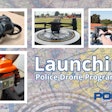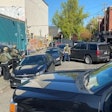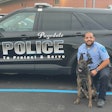 Photo: iStockphoto.com
Photo: iStockphoto.com
On the night of June 27, 1994, a refrigerator truck cruised silently through the narrow streets of the historic castle town of Matsumoto, Japan. No one took notice of it. No one had any idea of the sinister plans of its occupants nor the presence of the deadly cargo that it contained.
Shortly before 11:30 p.m., the driver parked the truck at the edge of a pond in one of Matsumoto's more affluent neighborhoods. Then he and other members of a powerful cult called Aum Shinrikyo ("Religion of Truth") unleashed death in the form of sarin nerve gas into the warm night air.
Their target was a group of judges presiding over a lawsuit against the cult. But in the next 12 hours their attack would kill seven people and injure 500.
Faced with an unprecedented crime, the Japanese police focused their investigation on a single Matsumoto resident who had stockpiled pesticides for his garden and whose wife was one of the victims. Nine months later that gentleman would be cleared of any wrongdoing, in the worst possible way. On March 20, 1995, Aum members perpetrated another sarin gas attack in the Tokyo subway system, killing 13 and injuring more than 6,000.
Most sources will tell you that the Aum incidents were the first successful WMD attacks staged by a terrorist group against unarmed civilians. Whether that's true is debatable, but one thing that's not debatable is that the Matsumoto and Tokyo incidents were a rude awakening for public safety officials in the world's largest metropolitan.
Before Aum, lethal chemical weapons were thought by most public safety officials to be available only to government and military entities. Sure some thriller writers had posited that terror groups could acquire such weapons, but that was fiction. Now, law enforcement agencies worldwide were dealing with a new and particularly disturbing reality. And they weren't prepared for it, especially not here in the United States.
Fifteen years ago most law enforcement agencies had no personal protective equipment (PPE) to shield their officers from chemical and biological weapons. If they had gas masks, what they had were Vietnam War-era surplus items that the troops could don in case they had to use chemical agents for riot control. That started to change in the late 1990s.
And then Oklahoma City was hit with a truck bomb. And jihadists flew airliners into the World Trade Center and the Pentagon. And there were Anthrax letters. And a lot of people in public safety started to worry about the possibility of chemical, biological, radiological, and even nuclear attacks on U.S. soil.
A decade has now passed since the World Trade Center towers burned and imploded on national TV. There have been no other catastrophic terror attacks on American soil, but men and women on the front lines of counter terrorism say they will come and when they do they will likely involve some element of gas or biologicals. FBI officials have been quoted saying there is a 100 percent chance of a WMD attack on America in the near future.
A future WMD attack could come from numerous sources. It could be an organized al-Qaeda operation; it could be the work of a domestic terror group, or it could be just the final Götterdämmerung act of an angry lone wolf. Either way, law enforcement must ask if it's ready to respond to such an unthinkable act.
The good news is that law enforcement has come a long way in its ability to both prevent and respond to WMD scenarios. Since 9/11 billions of federal dollars have been allocated toward supplying local public safety agencies with the resources needed to operate in a WMD environment.
Some of that money has been spent wisely on training and equipment. Some not so much. And unfortunately, some of it was spent on equipment that is now obsolete or expired.[PAGEBREAK]
Mission First
Det. Mark Seibel of the Los Angeles County Sheriff's Department says that in some cases agencies have gotten ahead of themselves when it comes to WMD response. Seibel, who was tasked with establishing the LASD's WMD response and training programs back in the 1990s, says too often agencies contact him looking for easy answers to WMD response and they ask the wrong questions.
"A lot of them are getting grant money to spend on PPE, and they want to know what to buy," Seibel says. "But that's putting the cart before the horse. The first thing you have to determine is what is your mission. They want a two-minute answer on what suits to buy, but we end up having a two-hour conversation on mission, training, and then equipment."
Any WMD incident in an American city is likely to require law enforcement to assume a number of different missions. Tactical units are likely to go into the hot zone with fire department hazardous material (HazMat) and EMS personnel to provide force protection against "two-legged threats" and secondary devices; patrol officers will be used in the warm zone to guard decontamination teams and maintain public order and in the cold zone for perimeter control; finally, specially trained officers will investigate and collect evidence for prosecuting the perpetrators.
Each of these different missions requires different equipment and training. "If you skip that training portion, the mission capability and the equipment are nothing," Seibel says. "And if you don't know what you're doing with PPE, you can get people killed."
Training Resources
Like grant money for PPE and other equipment, training has been made available by the federal government and other sources. And many agencies have been taking advantage of it.
Robert Scarabino is a WMD response instructor with the National Center for Biomedical Research and Training (NCBRT) at Louisiana State University. The NCBRT is a federally funded public safety training program that emphasizes WMD response, and since 9/11, Scarabino has taught classes to agencies in all 50 states and in several territories. But he worries that some agencies have skipped training as part of their WMD preparedness.
"Many of them that procured the equipment got the training, too," Scarabino says. "But others bought the equipment and didn't take the training."
Scarabino also says there's been a marked drop in class attendance for his programs since the immediate aftermath of 9/11. "Attendance petered off about 2004," he says.
One of the reasons that agencies are more complacent about WMD training now than immediately after 9/11 is the economics of the issue. Training costs money and pulls officers off the line. Another reason that WMD training is unpopular at many agencies is that it's not by any means a pleasant thing to do.
"Historically police see respirators and PPE as a burden," says James Wilcox, global director of marketing and product management for Avon Protection Systems. "Historically, PPE has not been designed for them; it's been a leftover from another market."
Avon Protection and other PPE manufacturers have been making great strides in improving the gear and making it easier to use and more comfortable for officers. "We show them newer designs where these issues have been resolved," says Wilcox, explaining that today's PPE is much more comfortable and suited to law enforcement operations than it was even just five years ago.
Obsolete Gear
Unfortunately, many American law enforcement agencies acquired their WMD gear in the years immediately after 9/11 before it was improved. And that makes it harder for their officers to train and possibly dangerous for them to wear the gear in an actual incident. This is especially true if the equipment has not been maintained.[PAGEBREAK]
Back seven or eight years ago when the DHS grants were first fulfilled for WMD equipment, the equipment was not subject to the same standards that it is today. Now both the National Institute for Occupational Safety and Health (NIOSH) and the National Institute of Justice (NIJ) certify air purifying respirator-style gas masks and other PPE for use during chemical, biological, radiological, and nuclear events. NIOSH also sets a shelf life of typically five years for gas mask filters. Once five years has passed, the filters should be used only for training.
Which means that many of the filters purchased during the last decade by law enforcement agencies are expiring or have expired. And that's a problem for cash-strapped agencies that may not have the money to spend on WMD gear when they need other more pressing items.
Worse, even the respirators themselves have a finite shelf life. Wilcox says that Avon Protection's masks are designed for at least 10 years of storage under the proper conditions. Unfortunately, as with much police gear, PPE is rarely stored under the proper conditions. "Officers tend to have this equipment in bags in the trunks of their cars or in storage areas in boxes. It's not stored in the proper environmental conditions, and it's not receiving the level of care and maintenance that it needs. They should store them in a dry, cool environment and check them regularly," he says.
OSHA requires that gas masks be fitted once per year to the face of the individual who will have to wear it in a hazardous materials environment. Wilcox says that's a good time to check the health of your gas masks. "You want to look for degradation of the rubber and visors. You also want to check the valves for any deterioration," he explains.
Multi-Agency Response
Even the best equipped agency is unlikely to face a WMD incident alone. Protecting the public, treating the injured, and protecting other responders will require just about all of the fire, EMS, HazMat, and police resources in the community that gets hit.
Commander Jason Kepp oversees the CBRNE (chemical, biological, radiological, nuclear, and high yield explosives) program of the Federal Protective Service (FPS). His jurisdiction is more than 9,000 federal properties nationwide, and his agency, which is part of the Department of Homeland Security, has one of the most active law enforcement CBRNE programs in the country. Federal buildings, including courts and IRS offices, are major targets for terrorists and subject to numerous terrorism hoaxes. "The FPS CBRNE program was created to support the mission of the FPS to handle credible CBRNE threats or incidents involving federal properties," Kepp says.
Kepp's advice to agencies nationwide is to build working relationships now before an incident occurs. "The first time for me to meet a D.C. police official is not when we have an incident inside a federal building," he says. "We need to sit across the table from each other and meet and discuss how we're going to battle this together in advance of having to do it. We rely heavily on other agencies."
One way that the FPS builds relationships with other agencies is through drills. Kepp says there are also working groups established among D.C.-area public safety agencies, and they meet on a regular basis.
Outside of D.C., the FPS protects federal properties in every state and territory, and its WMD activities are organized by WMD coordinators working out of regional FPS offices. "FPS WMD coordinators conduct outreach and maintain intelligence-focused relationships with federal, state, and local counterparts. They serve as subject matter experts in CBRNE incidents. They also assess and address WMD threats and risks reported to the regional office," Kepp explains.
And should a WMD incident occur, FPS regional coordinators will work with local law enforcement over secure communication lines and even on scene as "boots on the ground" with other federal agencies.
Any place where a WMD incident occurs is likely to see a lot of boots on the ground from many different agencies and even the military. National Guard units nationwide often have CBRN (chemical, biological, radiological, nuclear) response teams trained to respond to incidents in civilian areas. And once they are ordered on scene by a governor, they can help local law enforcement with a number of tasks.
But Kepp and other experts caution local agencies against expecting help to arrive instantaneously. It will take time to get DHS, FBI, and Guard response on scene. "In reality when we deal with a WMD event, it will be a local event; it will be a local problem. It will start at the local level and end at the local level."
Are You Ready?
Note that Kepp says "when" not "if" a WMD terror attack occurs. He and many other experts believe such an occurrence is likely in the near future. (See "Can It Happen Here?")
Given this disturbing conclusion, American law enforcement's preparedness for such an event has to be assessed. None of the experts consulted for this article would offer a grade on our national level of preparedness for a WMD attack. But they all say that law enforcement has better resources and training now than it did a decade ago.
"I think American officers are now much better prepared than they were 10 years ago," says Avon's Protection's Wilcox. "There is a level of awareness and a base level of protection equipment available to protect first responders."
The problem faced by American law enforcement is that as the images of the burning towers fade in the public's memory there may be much less support to spend money on personal protective equipment that may never be used. That means five years from now or a decade from now, America may be much less capable of handling a WMD attack on one of its communities.
Kepp cautions against such complacency. "Our adversaries are out there. They are trying to do this. And they are very patient," he says.


















